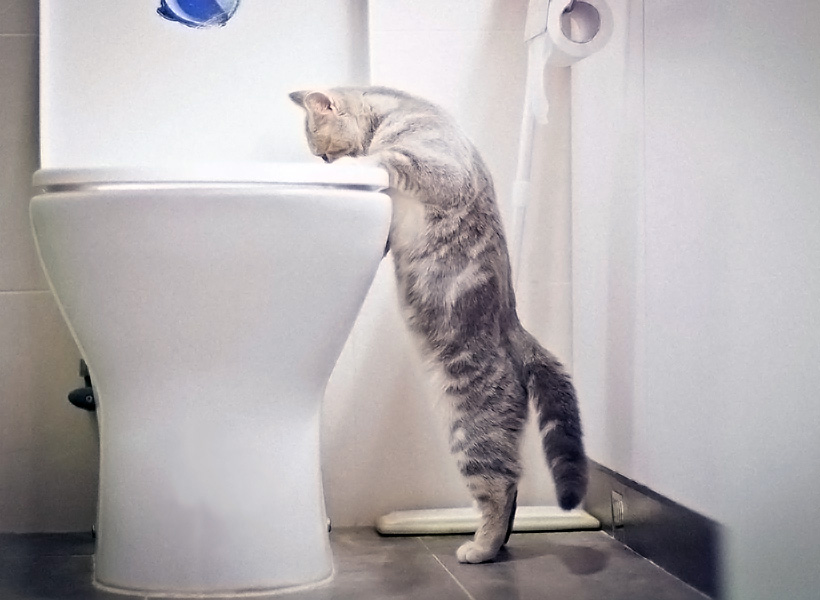Hazards of Flushing Cat Poop Down Your Toilet - Prevent Possible Issues
Hazards of Flushing Cat Poop Down Your Toilet - Prevent Possible Issues
Blog Article
The writer is making a number of good pointers relating to Can You Flush Cat Poo or Litter Down the Toilet? as a whole in the article beneath.

Introduction
As pet cat owners, it's necessary to bear in mind how we throw away our feline buddies' waste. While it might appear convenient to flush pet cat poop down the commode, this practice can have damaging effects for both the environment and human wellness.
Alternatives to Flushing
Fortunately, there are more secure and more responsible methods to take care of cat poop. Consider the complying with options:
1. Scoop and Dispose in Trash
One of the most usual method of dealing with feline poop is to scoop it into an eco-friendly bag and toss it in the garbage. Be sure to utilize a devoted trash inside story and take care of the waste quickly.
2. Use Biodegradable Litter
Choose eco-friendly cat litter made from materials such as corn or wheat. These litters are environmentally friendly and can be safely thrown away in the garbage.
3. Hide in the Yard
If you have a backyard, take into consideration hiding cat waste in an assigned area away from vegetable gardens and water resources. Make certain to dig deep adequate to stop contamination of groundwater.
4. Mount a Pet Waste Disposal System
Buy an animal garbage disposal system particularly created for feline waste. These systems utilize enzymes to break down the waste, decreasing odor and ecological impact.
Wellness Risks
Along with environmental worries, flushing pet cat waste can likewise pose wellness dangers to humans. Pet cat feces might include Toxoplasma gondii, a parasite that can create toxoplasmosis-- a possibly extreme illness, specifically for expectant ladies and individuals with damaged body immune systems.
Environmental Impact
Flushing pet cat poop introduces damaging pathogens and parasites right into the water system, posing a considerable risk to marine ecological communities. These contaminants can adversely affect marine life and concession water top quality.
Conclusion
Liable family pet ownership expands beyond giving food and shelter-- it likewise entails appropriate waste monitoring. By avoiding purging pet cat poop down the commode and selecting alternative disposal approaches, we can reduce our ecological footprint and secure human health.
Why Can’t I Flush Cat Poop?
It Spreads a Parasite
Cats are frequently infected with a parasite called toxoplasma gondii. The parasite causes an infection called toxoplasmosis. It is usually harmless to cats. The parasite only uses cat poop as a host for its eggs. Otherwise, the cat’s immune system usually keeps the infection at low enough levels to maintain its own health. But it does not stop the develop of eggs. These eggs are tiny and surprisingly tough. They may survive for a year before they begin to grow. But that’s the problem.
Our wastewater system is not designed to deal with toxoplasmosis eggs. Instead, most eggs will flush from your toilet into sewers and wastewater management plants. After the sewage is treated for many other harmful things in it, it is typically released into local rivers, lakes, or oceans. Here, the toxoplasmosis eggs can find new hosts, including starfish, crabs, otters, and many other wildlife. For many, this is a significant risk to their health. Toxoplasmosis can also end up infecting water sources that are important for agriculture, which means our deer, pigs, and sheep can get infected too.
Is There Risk to Humans?
There can be a risk to human life from flushing cat poop down the toilet. If you do so, the parasites from your cat’s poop can end up in shellfish, game animals, or livestock. If this meat is then served raw or undercooked, the people who eat it can get sick.
In fact, according to the CDC, 40 million people in the United States are infected with toxoplasma gondii. They get it from exposure to infected seafood, or from some kind of cat poop contamination, like drinking from a stream that is contaminated or touching anything that has come into contact with cat poop. That includes just cleaning a cat litter box.
Most people who get infected with these parasites will not develop any symptoms. However, for pregnant women or for those with compromised immune systems, the parasite can cause severe health problems.
How to Handle Cat Poop
The best way to handle cat poop is actually to clean the box more often. The eggs that the parasite sheds will not become active until one to five days after the cat poops. That means that if you clean daily, you’re much less likely to come into direct contact with infectious eggs.
That said, always dispose of cat poop in the garbage and not down the toilet. Wash your hands before and after you clean the litter box, and bring the bag of poop right outside to your garbage bins.
https://trenchlesssolutionsusa.com/why-cant-i-flush-cat-poop/

I was introduced to that write-up on Don’t flush cat feces down the toilet from an acquaintance on another domain. Be sure to take the opportunity to distribute this page if you enjoyed it. I enjoy reading our article about Don’t flush cat feces down the toilet.
Request An Appointment Report this page